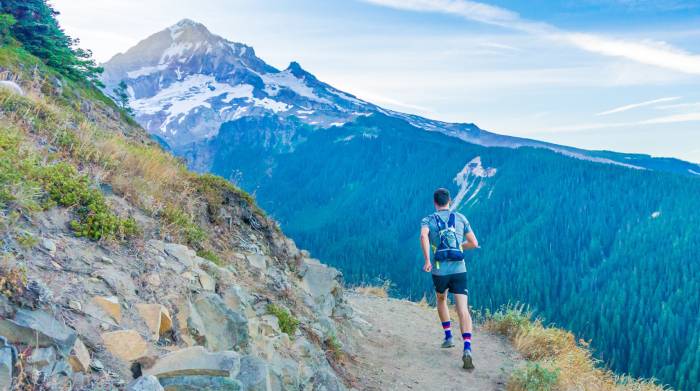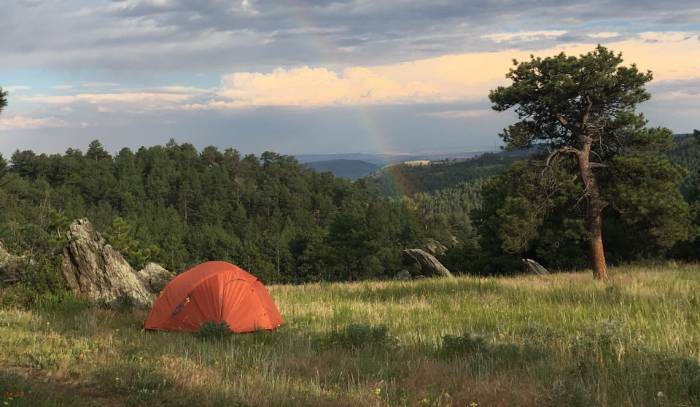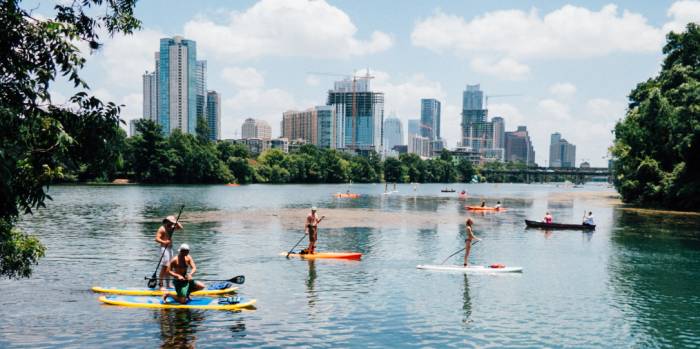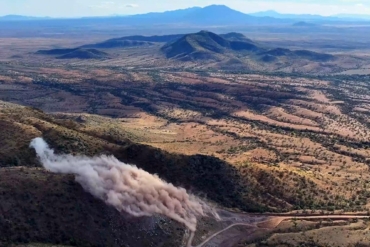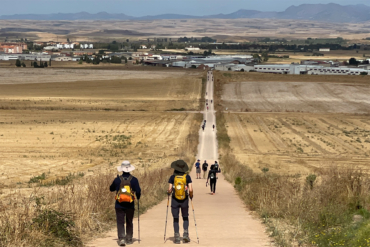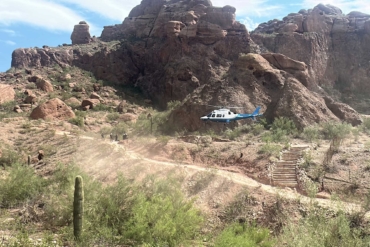Interest in outdoor activities has hit a fever pitch this year, with many people looking for new ways to experience the outdoors. If you’re one of these people looking for a new way to spend time outside, this quick rundown will tell you what to expect, what you need to get going, and what simple mistakes to avoid.
Whether you’re new to the outdoors or trying a new activity, keeping things fun is key. Taking some time to prepare for new activities and experiences with the right gear and mindset will keep your “summer bummers” to a minimum.
It’s in that spirit that we’ve outlined these four trending activities on how to get you going and make the most of the summer season.
Cycling & Mountain Biking
Bike sales soared this spring. People traded their commute to work in a car for a quick loop on their bike around their neighborhood or local trails on less crowded streets. Retailers across the country sold out of their bike stock and scrambled to replace the low inventory.
Americans bought road bikes, gravel bikes, commuter bikes, and mountain bikes. In fact, Google searches for “mountain bike” are twice as high this year than any point in the previous 5 years.
We love a good ride on a cruiser as much as anyone — until there’s a hill. If you’re among the many that helped bike stores sell out new bikes this spring, you may still have some childhood habits like standing up to mash the pedals. This applies to roads or trails.
Ideally, you’ll learn to spin your feet in an almost circular pattern: One leg pulls up slightly as the other pushes down. This may seem wimpy at first, but it saves your energy and helps you ride farther.
Another two-wheeled skill that takes time to make a habit is looking into turns. Your body will lean into turns according to where you look. Similarly, if you want to avoid a root or rock, look to a safe spot next to it. If you stare at an obstacle you will soon hit it.
Essential Gear
Bikes are a big-ticket item, so don’t skimp on a lock. For your safety, invest in a helmet and some basic lights (dusk will come soon enough). Beyond that, the right gear will make your rides more comfortable and efficient.
Cycling shoes: These will help you spin at a steady cadence with consistent power rather than mash the pedals. Be sure to get used to clipping in and out of your pedals in a safe area before you hit the road or trails in new shoes!
Padded gloves and shorts: Bike shorts are a line of commitment some are hesitant to cross, but they take riding comfort to the next level. A little padding goes a long way in soaking up bumps and vibration over a long day.
The same goes for gloves. Padded gloves take the sting out of bumps throughout a long ride and prevent fatigue in the wrists, arms, and shoulders.
Proper cycling shorts or bibs fit close and wick sweat from your nether regions. But don’t worry — you can wear lined, baggy mountain bike shorts on a road bike. We won’t judge.
Consider this: Get a jump on abetting exercise-induced inflammation after your ride with recovery gummies. Once home, you can give your muscles a rubdown with massage oil that for added relief.
Avoid this mistake: Don’t try to power through hilly terrain in harder gears. It’s a waste of energy and builds up lactic acid in your muscles. Instead, try shifting into easier gears to make sure you’re spinning at a steady cadence — even if you start to feel like the Roadrunner.
Day Hiking & Trail Running
Although both of these activities tend toward endurance, a day hike is any outdoor stroll that requires a meal break — let’s say 4 to 10 hours. Essentially, you’re traversing steep terrain or long trails, mostly walking, and need to take breaks.
Trail running is just moving a little faster. It’s all about the terrain and maybe a bit of isolation, as it’s tough to talk a lot while running on singletrack. The varied terrain of trail running is also a nice way for seasoned runners to escape some of the time expectations of their past performances.
There’s little gear to buy to start day hiking. It’s about being prepared, and you likely already have some sort of backpack that will work to carry water and snacks. Will it leave your back sweaty and make you uncomfortable? Maybe. But if you find you love this activity, you can always upgrade later.
Trail runners will probably opt for a vest to carry essentials. But even a handheld water bottle will do the trick for shorter trail runs of a couple of hours or less.
Day hikes can vary from walking deep into the wilderness and out again to tagging easy mountain peaks or hiking urban trails that skirt cafes and stores as mid-hike break stations.
Hikers and runners usually stash extra water, snacks, wet wipes, and a change of shoes in their car.
Essential Gear
Footwear and water are the biggest areas of concern for day hiking and trail running.
Trail shoes: If you plan on hiking trails without much weight on your back in warmer temps, consider a pair of trail running shoes, or a hybrid pair of hiking shoes that use more of a sneaker sole. They’re lighter and more comfortable than traditional hiking boots.
If the terrain gets steep or wet, hiking boots are another good option, although you can probably stick to lighter offerings.
Hydration vest: For runners, a hydration vest is the best way to carry water (which is heavy) close to your body and keep your hands free. These vests have room for a water bladder on the back and smaller bottles on the chest. Inside, stash a rain shell and snacks, and keep a cellphone close with a front pocket.
Hikers can usually get by with a small backpack.
Consider this: The early miles in new shoes can rub your feet the wrong way. You can address those issues on the go (or right after your hike or run) with CBDMEDIC topicals that are available in ready-to-go sealed packets; easy-to-pump sprays; and solid sport stick varieties that easily fit in your pack.
Nothing puts you in touch with obscure muscle groups like a new activity, and these topicals can help soothe sore muscles as well.
Avoid these mistakes: Bring more water than planned. Dusty trails and elevation changes make you thirstier than your usual flat-ground destinations, and it’s better to carry extra in case something goes wrong. Also, several energy bars and snacks are salty and meant to be consumed with generous amounts of water.
Walk up hills. Trail “running” can also include walking difficult parts of the trail. You can run up short climbs, but there’s a very short return on investment. Don’t let pride trick you into running up steeps — the pros walk up too.
Finally, make sure to check the weather and dress for the conditions. If you’re headed into higher mountains, you’ll almost certainly want a light rain shell and maybe extra layers. And avoid wearing cotton clothing. Synthetic layers like polyester and nylon dry much faster and will help keep you warm if they get wet.
Backpacking & Camping
Camping is a great way to get away from the hustle and bustle of everyday life and reconnect with nature. Living off of simplicities that you carry with you is a unique and rewarding experience. With proper preparation and planning, you can get your outdoor fix out in the wilderness and sleep under the stars.
One reason for camping’s popularity is that it’s as easy or difficult as you make it. You can drive all the equipment to your destination and even sleep in or on top of your car. Once your camp is set up, you can explore the surrounding area or play lawn games.
Backpacking involves a hike into more remote spaces or a multiday trip with several overnight stops. Packing up and carrying the equipment is a part of the challenge and the fun. The benefit is that you can camp away from others and let your legs (and back and stomach) decide when it’s time put the packs down and the tents up.
Essential Gear
Tents: These are a staple of any overnight stay outdoors. While most tents look a lot alike, each is built with different uses in mind. Our best backpacking tents and best camping tents reviews can help you find one that fits your summer plans.
In general, there’s a give and take between weight and roominess, with car campers often opting for a tent built for one more person than they plan on housing.
Backpack: Beginners can aim for a pack with a 60L capacity. A common design feature is a top section that can be removed and carried on its own.
This is a great way to carry some essentials on hikes away from camp after you’ve hauled everything up to a site. It also means you can use the bag without that top section on more minimalist hiking trips in the future.
First-aid kit: Even if you’re car camping, you want to address a health concern before you dash to the nearest urgent care center.
Odds and ends: There a lot of small essentials you should pack just in case. To make it easier to remember these, use a checklist and store them in a bin to make packing them easier next time.
Consider this: A sleeping pad is a low-weight piece of gear that provides cushion while sleeping just off the ground. For many, like side sleepers, a pad is camping essential. Another option for sleeping soundly on a camping trip is to take sleep gummies with CBD and melatonin.
Avoid these mistakes: When backpacking, address hotspots as soon as you feel them. Beginners often try to tough it out through some discomfort, but blisters are a nagging problem to avoid at all costs. Pack an extra pair of socks and moleskin patches to cover hotspots before they become blisters.
Set up the rainfly no matter how clear the skies seem. Setting the fly up in the rain isn’t fun (and a little too late). Climbing back into your soaked tent in wet clothes is even less fun.
Standup Paddleboarding (SUP)
We had to include one of the most popular, beginner-friendly activities. Most newbies get the hang of standup paddleboarding within 15 minutes. In calm water, the biggest challenges are balancing and effectively paddling.
If you lose your balance, and you’ve learned to fall to the side and not on the board, you land in the water. That’s not exactly a harsh penalty during most summer outings.
To get anywhere fast requires efficient paddling. The easiest tips are to hold the paddle with your hands at roughly shoulder-width apart, use upright strokes close to the board, and use consistent power on both sides of the board.
Once you move to more open water with waves or a current, there’s a jump in the skill level. As with most watercraft, head into the wind first if winds pick up or you get tired.
Essential Gear
Leash: Falling off into a slower current means you have to swim after your paddleboard. Get a leash and save your energy for paddling rather than swimming.
Sun protection: A hat and shades are obvious when you’re out on the water. However, standing just above the water exposes a lot of your body’s real estate to the sun’s rays reflecting off the water. Sunscreen is a great idea, but consider a long-sleeve shirt as well.
Avoid this mistake: Don’t look at the board. Once you’re to the point of balancing, you may tend to watch your feet and focus on keeping that balance. Instead, look where you want to go and your body will follow. There’s a metaphor in there somewhere.
This article is sponsored by Charlotte’s Web. Find out more about hemp-infused topical creams and balms and high-quality hemp extracts with naturally occurring CBD here.


